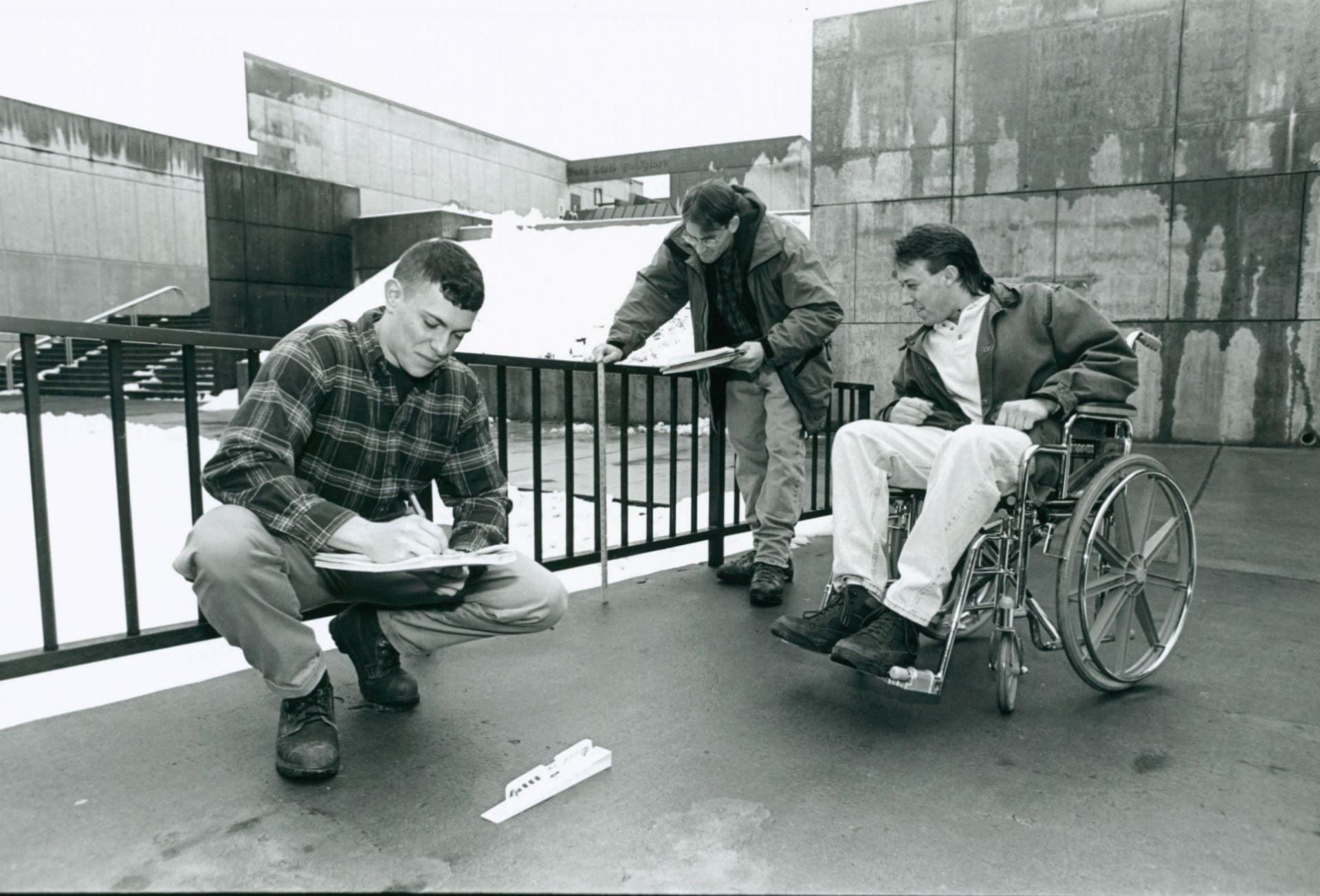The Americans with Disabilities Act of 1990 had a significant impact on universities across the country, including on instruction, programs, employment, and physical accessibility of buildings. ADA required that colleges and universities provide reasonable accommodations for students with documented disabilities. In Fall 1994, there were a total of 1050 disabled students identified at Penn State, including commonwealth campuses. For University planners and designers to understand the scope of updates necessary to provide full accessibility is an ongoing process of learning that required collaboration with disabled students and local residents.
Greg Grieco photographer for Penn State’s Public Information Office took photos showing work being done by the Office of Physical Plant to comply with the ADA guidelines and regulations in order to enhance accessibility on campus. The Bryce Jordan Center, formerly known as the Academic/Athletic Convocation and Events Center, is located on the campus of the Pennsylvania State University and was designed to be accessible for the disabled when it opened in 1995.
While progress was made in some parts of the University, disabled students still encountered obstacles across Commonwealth campuses. John Emerson, a computer programming student with physical disabilities raised issues regarding accessibility at Penn State Behrend.
Students with Disabilities by Type, 1994, Pennsylvania State University, Office of Physical Plant records, 1219
“Handicapped on campus: Behrend,” The Behrend College Collegian, February 16, 1995
“Designers, disabled trying to make center accessible,” The Daily Collegian, August 26, 1992
Photographs, Physical Plant series, Greg Grieco photographs, 07488







